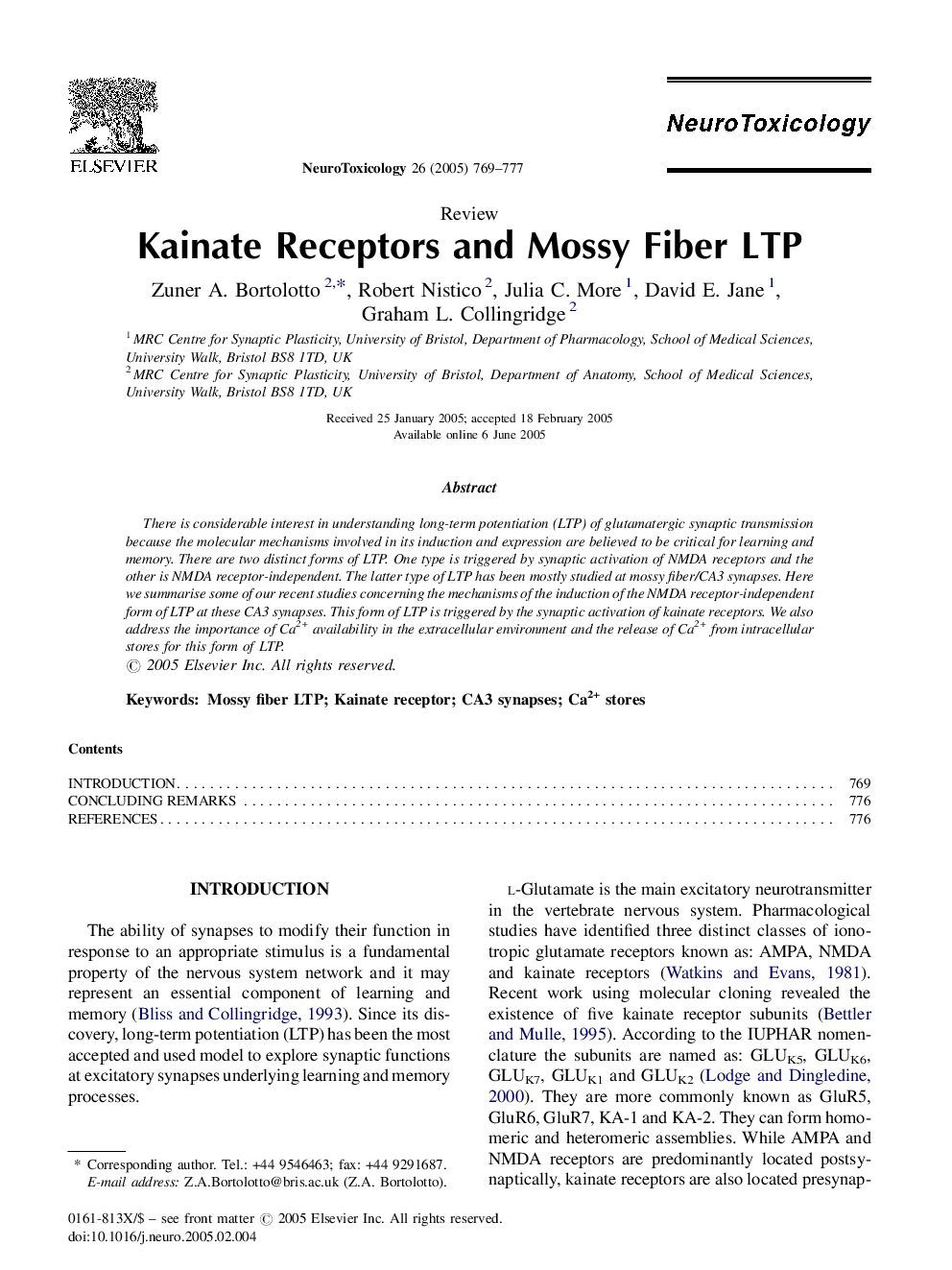| Article ID | Journal | Published Year | Pages | File Type |
|---|---|---|---|---|
| 9032201 | NeuroToxicology | 2005 | 9 Pages |
Abstract
There is considerable interest in understanding long-term potentiation (LTP) of glutamatergic synaptic transmission because the molecular mechanisms involved in its induction and expression are believed to be critical for learning and memory. There are two distinct forms of LTP. One type is triggered by synaptic activation of NMDA receptors and the other is NMDA receptor-independent. The latter type of LTP has been mostly studied at mossy fiber/CA3 synapses. Here we summarise some of our recent studies concerning the mechanisms of the induction of the NMDA receptor-independent form of LTP at these CA3 synapses. This form of LTP is triggered by the synaptic activation of kainate receptors. We also address the importance of Ca2+ availability in the extracellular environment and the release of Ca2+ from intracellular stores for this form of LTP.
Related Topics
Life Sciences
Environmental Science
Health, Toxicology and Mutagenesis
Authors
Zuner A. Bortolotto, Robert Nistico, Julia C. More, David E. Jane, Graham L. Collingridge,
